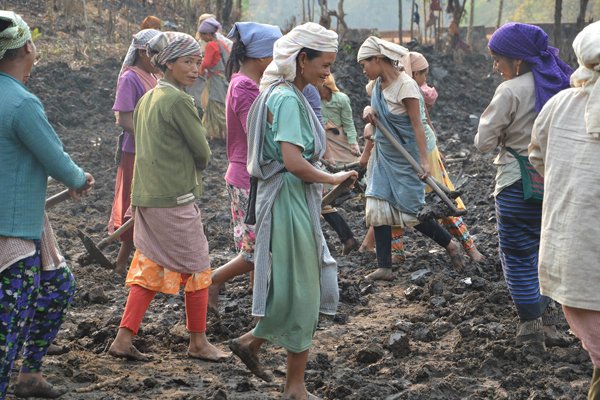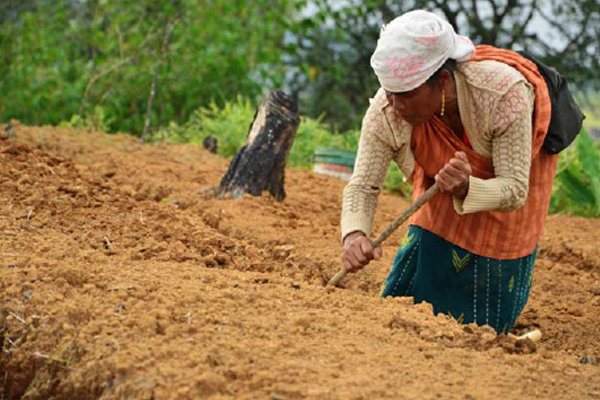Megha-LAMP has made significant strides in achieving sustainable management of natural resources through the community-collaborated Integrated Natural Resource Management Plans (INRMP) in partnership with the Village Employment Councils (VECs). VECs are the development delivery institutions in the villages of Meghalaya, consisting of male and female HHs of the traditional village institutions and functioning as Gram Sabha. By conducting a comprehensive mapping exercise, the project effectively identified priority activities for interventions, thereby facilitating the preparation and implementation of these plans in the targeted 1350 villages. INRMPs are ensuring the responsible use and conservation of natural resources across the project area.
Integrated Natural Resource Management Key Interventions

PREPARATION AND IMPLEMENTATION OF INRM PLANS

FARM MECHANIZATION
Megha-LAMP has strengthened farm mechanization in Meghalaya with the establishment of Custom Hiring Centres (CHC) at 72 locations across the project area, benefiting nearly 9000 farming households. The initiative aims to accelerate the process of agricultural modernization in the state, improve agricultural production efficiency, create an agricultural surplus economy, increase the possibility of farmers’ market participation, and promote high-quality agricultural development. Owned and managed by the Integrated Village Cooperative Societies Ltd. (IVCS) in a social enterprise mode, CHCs provide fee-based custom hiring of agri tools and farm machinery at reasonable and fair charges. Some of the tools available for rent in CHCs include power tillers, rotary tillers, post-hole diggers, brush cutters, sprayers, etc.
Further, women traditionally do not have access to handling and operating agri-tools and farm machinery, which are generally handled and operated by men. A conscious inclusion and capacity building of at least one woman among the three Farm Machinery Operators in CHCs has resulted in improved access and control of farm machinery among rural women and enhanced their confidence in using new agri-tools and farm machinery


WATER SECURITY
INRM focuses on securing water access for both domestic and irrigation purposes. It encourages and assists communities in undertaking catchment area treatment and management activities aimed at soil and water conservation. This includes mapping and rejuvenating water sources and implementing measures to prevent soil erosion. Water lifting devices, such as hydrams and solar/electrical water pumps, have also been installed.
1,230 villages have benefited from water-related interventions, totaling 5,185 sites across the project area. These include 3,880 domestic water security sites and 1305 irrigation sites, such as check dams and RCC canals. Additionally, INRM provides village communities and individual farmers with opportunities to engage in other natural resource-based livelihood activities, including community fishponds, integrated farming, and plantations.

INSTITUTIONALIZING A SYSTEM OF ONGOING CONVERGENCE
One of the key achievements of Megha-LAMP is integrating the INRM component into the Mahatma Gandhi National Rural Employment Guarantee Scheme (MGNREGS). This strategic move has allowed project villages to access additional funds and expand their work scope. Given the communities’ familiarity with MGNREGS, the integration of INRM was seamless.
This convergence has enabled the project to undertake interventions beyond its original funding, focusing on securing water for domestic and irrigation purposes and boosting agricultural production, thereby maximizing benefits for target villages.
The project has established convergence with several departments, including Soil and Water Conservation, Community and Rural Development (C&RD), Water Resources, Public Health Engineering (PHE), and Forests and Environment.
Since its inception, the project has empowered Village Employment Councils (VECs) to mobilize approximately Rs. 67 crores through this convergence. Additionally, as part of the strategy to enhance community ownership, the project has facilitated the VECs in mobilizing a 15% community contribution through labor, locally available materials, and cash.


